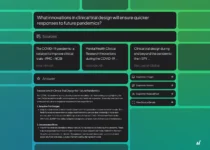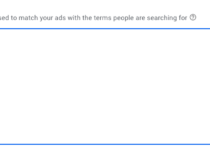Give Them What They Want, Sell Them What The Need
How to attract clients with value while keeping your best work profitable
A lot of my colleagues in sales struggle to find clients. They stab in the dark, make cold calls and chase people in the DM’s on LinkedIn with little or no success.
One thing that gives me a major advantage is that I understand things like Content Marketing and Digital Marketing which helps me attract clients instead of chasing them.
Instead of spending endless hours cold marketing for clients, I can create content that is attractive to my Ideal Client Avatar (ICA) and then lead them through an automated marketing funnel which nurtures that lead for me.
Its so nice to get a steady stream of inbound calls scheduled instead of chasing with sleazy an ineffective pitches.
Content Marketing is the creation and sharing of online material (such as videos, blogs, and social media posts) that does not explicitly promote a brand but is intended to create interest in its products or services.
When it comes to content marketing, one question I often get asked is ‘how do I know what to give a way for free and what should I be charging for’?
It’s a great question, especially since we are always told that you’ve got to add more value than your competitors.
This seems like it could create a race to the bottom where you are constantly giving away more and more knowledge, leaving you with little that you can charge for.
I once heard a great quote from Sean Cannel of Think Media say ‘Give them what they want, sell them what they need’.
What I love about this quote is it give you a simple and powerful framework that will help you become better at all forms of marketing (traditional, digital or content marketing).
It will also help you understand what you should be charging for if you are a coach, consultant, course creator, run a community, sell books or have some other way that you’d like to monetize your knowledge.
The Emotional Transformation Vs. Features & Benefits
One of the biggest problems that people have in sales is they try to sell the ‘features and benefits’ of their offer.
Imagine you go into a car dealership because you want to buy a car.
You walk through the front door and you are approached by a sales rep who starts to show you various models on the showroom floor.
He pulls you over to a sedan and starts to point out the safety features, shows you the onboard technology and all the new gadgets, tells you how many miles per gallon it gets.
What you really want is a sports car because you’ve just split up from your partner after a 4 year relationship and your ready to create a new and exciting chapter in life.
You want something fast that takes the breath out of you as the car quickly accelerates from zero to 60 in under 3 seconds.
You want a car that you can zip down the Pacific Coast Highway with the top down and the wind blowing through your hair.
You couldn’t care less about the safety features, miles per gallon or tech gadgets. You want something that gives you a free spirit.
That’s where so many people get it wrong in marketing and sales.
They assume they know what their clients want and then try to sell them on the solution.
What people really want is a feeling, and your offer is what is going to get them there.
First, Give Them What They Want
In your free content, this is where you focus on helping your audience experience those feelings of transformation.
For someone selling cars that would mean using content marketing to help create those feelings that people want to experience when buying a new car.
That might be the adrenaline rush of a sports car, it might be the feeling of luxury as you pull up to the Country Club; or it might be a feeling of escaping to the outback in an SUV.
For someone like a business coach or financial advisor might want to create free content that helps their audience feel what its like to be financially free and not struggling with the suffocating burden of debt.
Someone that sells fitness coaching might want to create content about transformations (before & after case studies) or what its like to have a beach body or 6 pack abs, or walking into your 20 year high school reunion and looking better than anyone else in the room.
Let’s say you sell recipes for delicious and healthy Keto Meals. Your content might want to focus on being able to eat delicious foods that don’t make you gain weight and not how they are made (the recipes).
Quick recap: free content should focus on the feeling or emotion that your audience wants to experience.
Now, Sell Them What They Need
Position your offer as what they need in order to experience that feeling or emotion that they want to experience.
If you want to (experience this) then (my offer) will help you get there.
If you want to have 6 pack abs, then sign up for my 30 day beach body challenge.
If you want to eat guilt free and not put on the pounds, then buy my recipe book that has 30 Keto meals that you can make in under 30 minutes.
If you want to be financially free in the next 5 years, then sign up for my FIRE coaching package that will help you get there.
Your paid content (course, community, book, videos, coaching, consulting) is where you teach them the actual roadmap or success path to help them obtain what they want.
On a side note: the transformation you offer may require hard work, time, money or some other sacrifice or friction. Its a good idea to be mindful of how this can be perceived by your audience in your free content.
How Much Can You Give Away In Your Free Content Without Sabotaging Your Sales?
A lot of people overthink how much they should give away in their free content when it comes to the actual knowledge or strategy they want to sell.
In my opinion when it comes to knowledge based services, giving away content won’t hurt you but its just not what emotionally moves people to by from you.
In other words you shouldn’t worry about ‘giving away your secrets’ but if you focus too much on delivering value then you are eroding what you can deliver in your paid content.
The benefit to adding some strategy or core concepts from your paid material helps establish you as the authority (in other words, helps your audience have confidence that you know what you are talking about).
It also gives them a nice ‘taste’ of what is to come if they purchase from you. The key takeaway is you don’t need to over do it, that’s not what makes people buy from you.
You Can Charge More When You Can Amplify The Feeling
One interesting thing that I found as I started growing more and more high ticket & premium clients is they don’t really care about the strategies or concepts.
They wanted an identity that matched with who they want to become.
For example, I work a lot with executive and business coaches.
I can teach them about how to grow their clientele or market better through any of my low or mid ticket offers (like courses).
But they would pay me $500 per hour to help them be accountable to the person they wanted to become.
Ultimately, these high ticket and premium clients were willing to pay much more than the average person to help them be more confident and step into the person they want to become, not just the knowledge I was able to give them.
There was a time when I paid $25,000 to participate in a high level mastermind with several other very experienced entrepreneurs.
It wasn’t so much knowledge that I was seeking, it was the feeling of being around other successful entrepreneurs.
Now, Put This Into Action
Grab a piece of paper and draw a line down the middle, creating 2 columns.
On one side brainstorm as many ‘wants’ that your clients have. Not just their desired outcomes but also the feeling they get when they get them.
Think about not just the external stuff (beach body, nice house, nice car) but the internal emotional state they want to experience (confidence, validation, freedom, wealth, abundance, certainty).
On the other side, write down what they need to do to get that desired outcome (exercise, budgeting, nutrition, coaching, skills, community).
The ‘want’ column should give you a list of juicy and enticing ideas to create free content around that will attract your ideal clients.
And the ‘need’ column should be filled with action items that you can create paid content around (courses, books, coaching, group coaching, mini course, challenges, community, paid podcast, paid newsletter).
Want To Go Deeper?
I’ve got plenty of articles here on Medium about the psychology of sales and marketing.
Here’s an article I wrote on the 7 ‘sales lever’s to help you know what gets people to smash that buy button.
You can also grab my Digital Marketing Vault — packed with scripts, frameworks, trainings, email sequences, and templates. Everything you need to attract clients and sell with confidence
Simon


